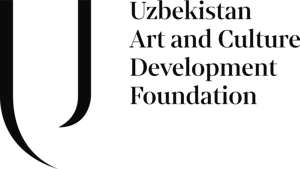Archaism vs. Modernity
May 20–November 26, 2023
Quarta Tesa
Arsenale, Castello
30122 Venice Italy
Italy
Instagram / #BiennaleArchitettura2023 / #UnbuildTogether / #TheLaboratoryOfTheFuture
The Art and Culture Development Foundation of the Republic of Uzbekistan (ACDF) announces the Uzbekistan National Pavilion, entitled Unbuild Together: Archaism vs. Modernity, and curated by the architectural firm Studio KO. The curatorial team includes Karl Fournier, Olivier Marty, Jean-Baptiste Carisé, Sophia Bengebara.
In response to the theme of the 18th International Venice Architecture Biennale, “The Laboratory of the Future”, the project addresses different horizons of Uzbekistan’s architectural heritage as a potential tool to envision the future and a key element to challenge the concept of modernity.
Unbuild Together: Archaism vs. Modernity is a research-based project which will be centred around the ruins of the qalas, ancient fortresses of the Karakalpakstan, heritage of the Khwarazm civilization, and the multiple possibilities that earth offers to build, especially the bricks. Bricks, both a universal and archaic material, are the building block of Uzbek architecture.
Together with the architectural students and professors of the Ajou University in Tashkent, and associated artists, Studio KO will explore the materiality of bricks, soil, and clay. Through this collaboration combining theoretical work experimentation with the students and a reinterpretation of the modes of brick fabrication, its techniques of construction and its types of finishes, the spatial proposal of the Pavilion will emerge.
Certain bricks in the installation will be glazed by Uzbek artist and ceramics master Abdulvahid Bukhoriy, one of the few craftsmen to master the nearly lost Blue Bukhara ceramics technique.
“Uzbekistan is a country with a rich and diverse cultural heritage, and its ancient qalas (fortresses) and traditional craftsmanship are an important part of this legacy. The qalas, which are found throughout the country, are an enduring symbol of the resilience and strength of the Uzbek people, and are a testament to the country’s long and varied history. By promoting their significance at the 18th International Venice Architecture Biennale, we can help to raise awareness of the importance of cultural heritage preservation and encourage others to join us in this effort”. —Saida Mirziyoyeva, Head of the Communications and Information Policy Section of the Administration of the President of the Republic of Uzbekistan.
“As we look towards the future, our ancient heritage can help us to rethink the trajectory of humanity and the role that architecture plays in shaping our collective destiny. By examining the architectural remains of past societies, we can gain insight into the values, beliefs, and technologies that shaped their worlds. This in turn can inform our own design choices and decision-making as we work to build a better future. Traditional Uzbek bricks made using centuries-old techniques are durable, sustainable, and beautiful. Manufactured from natural materials, they are still sturdy and can last millennia, making them a good choice for long-lasting building projects.” —Gayane Umerova, Executive Director of the Art and Culture Development Foundation of the Republic of Uzbekistan.
”Our response to the theme of the 18th International Venice Architecture Biennale, The Laboratory of the Future, can be read as an encounter of different horizons, allowing us to take a cross look at the Uzbek architectural heritage, to delve into its past in order to find the necessary tools for the elaboration of tomorrow’s world. Unbuild together the modernity, by questioning the notion of archaism.
Participation is above all collaborative, placing the human being at the center of our approach. Through the exchanges between us and architectural students of Ajou University in Tashkent, craftsmen and associated artists, a collective proposal will emerge, leaving a place for the unexpected.
The associated artists all have a poetic role accompanying our approach. A film in the core of the architectural installation by El Mehdi Azzam, diffusing its significance and emotion. A reduced model made by Miza Mucciarelli, as a mental comprehension of the lived experience. A photographic work by Emine Gözde Sevim, a sensitive eye of a shared experience.
It is about giving ourselves theoretical and practical tools to achieve this. From the ruins of the ancient qalas to the multiple possibilities that earth offers to build, especially the brick. From the mythical figure of the labyrinth to the constructed reality. As many elements to be reinterpreted in order to create a sensitive and poetic architectural proposal, reflecting a truly contemporary and contextual practice.” —Studio KO, curators.
About the curators
Since meeting at the Beaux-Arts school of Architecture in Paris and the subsequent creation of their studio in 2000, Karl Fournier and Olivier Marty have applied their elementary assertion to every scale of their projects. Based in Paris and Marrakech, Studio KO creates contemporary public and residential architecture all over the world, inspired by the intelligence of places.
Not confined to a grammar of styles or any systematic methods, the studio is defined by an attitude. An esteem for nature and existing cultures, the audacity of the broad aesthetic differences, an attention to craftsmanship and local skills, a permanent search for the rugged. For an architecture of oxymoron. Radical and archaic. An architecture with a sensibility that, from the foundations to the signature scent, reveals, without arrogance, its uniqueness and mystery.
About the commissioner
The Art and Culture Development Foundation under the Cabinet of Ministers of the Republic of Uzbekistan, founded in 2017 by the decree of President Shavkat Mirziyoyev, fosters international cooperation and promotes the culture of Uzbekistan on the international stage. It showcases national heritage by initiating projects in the fine arts, architecture, literature, theater, music, craft, design and dance.
The mission of the Foundation is to create an inclusive and accessible environment in the country’s cultural institutions, to contribute to the renovation of museums, and to develop cultural patronage and professional training for the arts and culture sector.
For more information about Unbuild Together: Archaism vs. Modernity, please contact Thomas Lozinski or Tahani Marie Samiri, Claudine Colin Communication.


